Oral
Arrhythmias & Diffusion
ISMRM & ISMRT Annual Meeting & Exhibition • 10-15 May 2025 • Honolulu, Hawai'i

| 08:15 |
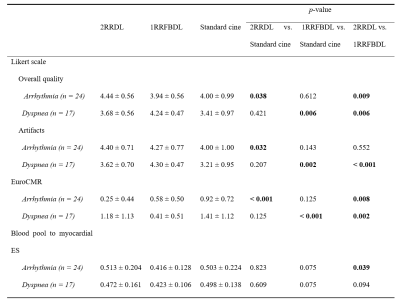 |
0422. Comparison
of Breath-Hold vs. Free-Breathing Accelerated Cine with Deep
Learning: Validation in Arrhythmia and Breath-Holding Patients
Y. Wu, S. Wang, W. Sun, X. Qian, Q. Wen, G. Fu, H. Jin, L.
Tian, Y. Chen, M. Zeng
Shanghai Institute of Medical Imaging, Shanghai, China
Impact: Deep learning cine reduce scan times while
maintaining accurate biventricular parameters accuracy and
comparable image quality, improving clinical work flow and
patient comafort. Our research promotes their clinical use
and provides guidance for selecting appropriate sequences in
various clinical settings.
|
| 08:27 |
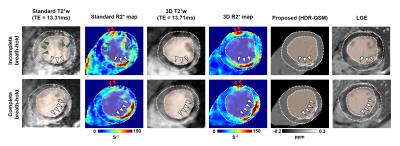 |
0423. Diagnosing
Intramyocardial Hemorrhage using Free-Breathing, Cardiac QSM
with Full LV Coverage: Clinical Findings with Validations in
Canines

Y. Huang, X. Liu, x. Guan, X. Zhang, G. Anthony, A.
Malagi, C-c Yang, L-T Huang, X. Li, G. Yoosefian, X. Bi,
F. Han, C. Gao, K-L Nguyen, D. Li, Q. Yang, R.
Dharmakumar, H-J Yang
Indiana University School of Medicine , Indianapolis, United States
Impact: The free-breathing HDR-QSM technique enhances
IMH detection and quantification over R2* mapping. It is
validated in animals and tested in STEMI patients with
impaired breath-holding ability and shows promise for
broader clinical use, pending further validation in larger
trials.
|
| 08:39 |
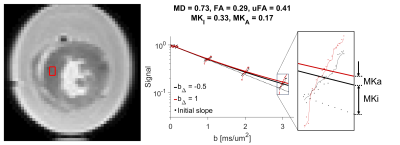 |
0424. Q-space
trajectory imaging (QTI): Enhanced specificity in diffusion MRI
characterisation of hypertrophic mouse hearts ex vivo
M. Afzali, S. Lasič, H. Lundell, L. Khazin, R. Foster, S.
Coveney, S. Plein, E. Dall'Armellina, N. Yuldasheva, F.
Szczepankiewicz, J. Schneider, I. Teh
University of Leeds, Leeds, United Kingdom
Impact: Q-space trajectory imaging has the potential to
distinguish different microstructural features including
cardiomyocyte hypertrophy, disarray and/or increased
fibrosis seen in aortic stenosis and other pathologies, with
greater specificity than existing techniques, and could lead
to improved diagnosis and patient management.
|
| 08:51 |
 |
0425. Early
Myocardial Dysfunction in Sepsis Patients: Insights from
Creatine CEST CMR Imaging
Q. Xu, K. Xue, Y. Yang, T. Liu
The First Hospital of China Medical University, Shenyang, China
Impact: CEST can complement conventional CMR by
providing valuable insights into early clinical diagnosis of
myocardial dysfunction in sepsis, thereby facilitating
timely therapeutic strategies.
|
| 09:03 |
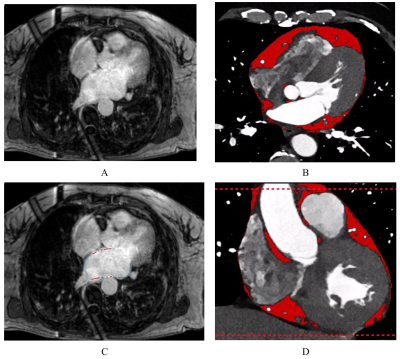 |
0426. Relationship
Between Atrial Fibrillation-Related Atrial Fibrosis, Epicardial
Fat Tissue, and Left Atrial Volume in AF Patients
Q. Hua, Z. Guo, Y. Ge, J. An, M. Wang
Fuwai Central China Cardiovascular Hospital, Zhengzhou, China
Impact: These
findings highlight the role of pericardial fat and left
atrial volume in AF progression, improving early detection
and management, and emphasizing the use of imaging
techniques for better diagnosis and understanding of AF
pathophysiology.
|
| 09:15 |
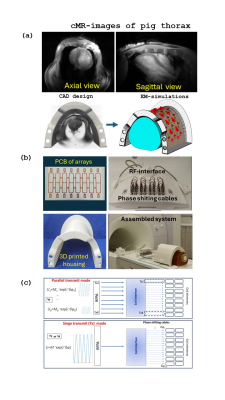 |
0427. First
7T 19F MRI with labeled cells in a pig model of myocardial
infarction using the twin-rf-array system with pTX support for
human MR-scanner.
M. Terekhov, I. Elabyad, H. Marwan, F. Jabbarigargari, R.
Grampp, A. Stadtmueller, M. Keshtkar, G. Ulm, S. Dembski, U.
Hofmann, W. Bauer, L. Schreiber
University Hospital Würzburg, Comprehensive Heart Failure Center, Wuerzburg, Germany, Germany
Impact: First in-vivo images with 19F-labeled cells in a
pig heart were acquired in whole body 7T-scanner using
dedicated twin-arrays for 1H and 19F-MRI. pTX support allows
subject-specific B1-shimming for both 1H and 19F-imaging and
high-quality anatomic cardiac images.
|
| 09:27 |
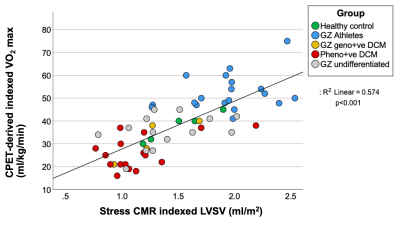 |
0428. Stress
CMR as a measure to separate athletic hearts from early dilated
cardiomyopathies
R. Ipek, J. Holland, R. Xavier, P. Arvidsson, W. Watson, L.
Valkovic, D. Holdsworth, E. Nicol, A. Lewis, O. Rider
Oxford Centre for Clinical Magnetic Resonance Research (OCMR), Oxford, United Kingdom
Impact: Addition of dobutamine stress imaging during
clinical CMR is a short, safe and feasible add-on, which
markedly improves the ability of CMR to separate athlete´s
heart from early DCM.
|
| 09:39 |
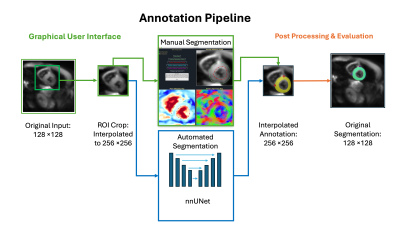 |
0429. Automated
Segmentation and Annotation of Cardiac Diffusion Tensor Images
S. Stocker, A. Hannum, T. Le, T. Cork, D. Ennis
Stanford University, Stanford, United States
Impact: Automated segmentations of cDTI enable
streamlined analysis, reduce manual effort, and improve
efficiency of cDTI research.
|
| 09:51 |
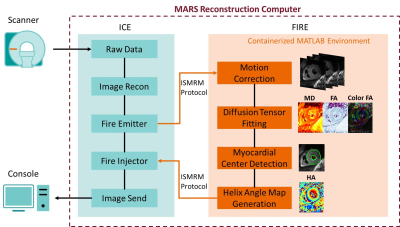 |
0430. Cardiac
DTI Inline Automated Processing and On-scanner Diffusion
Parameter Map Visualization Using FIRE
Y. Liu, D. Kara, K. Chow, D. Han, N. Jin, P. Speier, D.
Kwon, X. Bi, C. Nguyen
Siemens Medical Solutions USA, Inc., Cleveland, United States
Impact: Inline processing enables evaluation of
diffusion parameters immediately on scanner or in PACS and
enables wide-spread distribution and clinical evaluation of
cardiac DTI. Thus, this work implements a key step towards
clinical use of cardiac DTI.
|
| 10:03 |
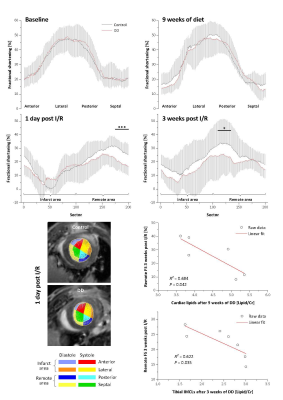 |
0431. Longitudinal
MRI/MRS reveals early lipid deposition in murine prediabetes as
predictive marker for the outcome after myocardial infarction
U. Flögel, V. Flocke, K. Heller, Z. Ding, M. Grandoch
Heinrich Heine University, Düsseldorf, Germany
Impact: Persisting screening of organ lipids by 1H
MRS may serve for risk stratification in patients, with
tibial IMCLs in particular being easily measurable. Here,
dedicated leg surface coils and the superficial anatomical
position of the tibia will provide ultra-high sensitivity.
|
The International Society for Magnetic Resonance in Medicine is accredited by the Accreditation Council for Continuing Medical Education to provide continuing medical education for physicians.